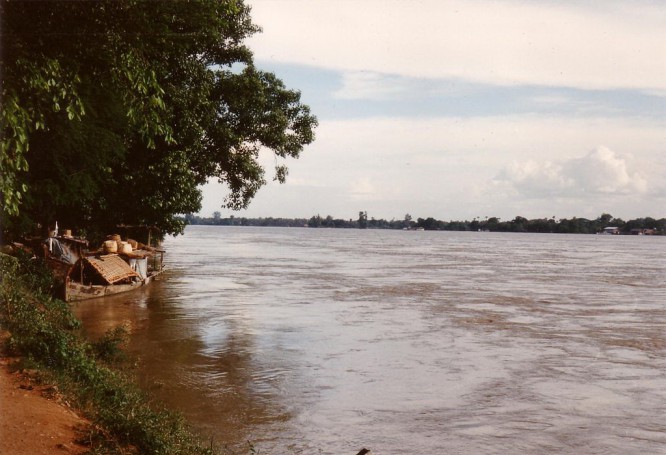The Chindwin River in Upper Burma is contaminated with a significantly high level of heavy metals, making its water unsafe to drink, according to government officials.
The Directorate of Water Resources and Improvement of River Systems, a bureau operating under the Ministry of Transport, announced this week that it had recently conducted a survey in nine towns along the Chindwin River to measure the levels of heavy metal toxicity. Results showed the toxicity levels as “dangerously high”.
“We discovered that the contamination of heavy metals such as iron, copper and arsenic has increased in the Chindwin River due to waste disposal from gold mining operations,” said the Ministry of Transport’s Director-General Aung Myo Khine. “The water is not fit for drinking.”
He said a survey was also conducted in the Irrawaddy River, with the results showing no alarming levels of contamination there. The ministry is now preparing to conduct surveys in other rivers across Burma.
Aung Myo Khine said, “The pollution was caused by mining activities and operations along the river, and also factories draining their waste into the water, as well as sewage from local towns.
“Ideally we would like to prevent such pollution, and that’s why we are conducting these surveys.”
The Stockholm Environment Institute (SEI), in partnership with the Myanmar Environment Institute and other concerned agencies, has also been monitoring the water quality in the Chindwin River since last year. On its website, SEI says the Chindwin “is facing serious environmental problems such as pollution, riverbank erosion and sedimentation”.
It adds: “An urgent concern is the impact of upstream mining activities and discharge of untreated chemical and heavy metal waste into the river and waterways.”
In July 2015, SEI’s Rajesh Daniel wrote: “The Chindwin River, the biggest tributary of the Ayeyarwady [Irrawaddy] River, rises in northern Myanmar [Burma] at the junction of several smaller rivers in the Hukawng Valley. It flows south about 1,200 km, its journey in the upper reaches marked by sheer cliffs and forested mountains, and sandbanks that are constantly shifting the shape of the river in the dry season. Its lower sections are more populated, dotted with villages among cleared out patches of forests alongside tea gardens and rice fields.
“Myanmar’s rivers have always been vital means of transport for people and goods, and traveling along the Chindwin, one can still see logs being shipped on bamboo rafts as well as rice, fish and vegetables sent from the riverside towns downstream to Mandalay and Yangon [Rangoon].
[related]
“Conditions are changing rapidly however, causing serious environmental impacts.
“Water quality is deteriorating due to heavy metal contamination (especially mercury) from jade, copper and gold mining upstream. This makes it dangerous for people to continue using the river for drinking, bathing or washing.”
The issue of illegal mining and environmental damage on the Chindwin was raised last year at the Sagaing regional assembly. However, to date no measures appear to have been put in place to combat the problems.



